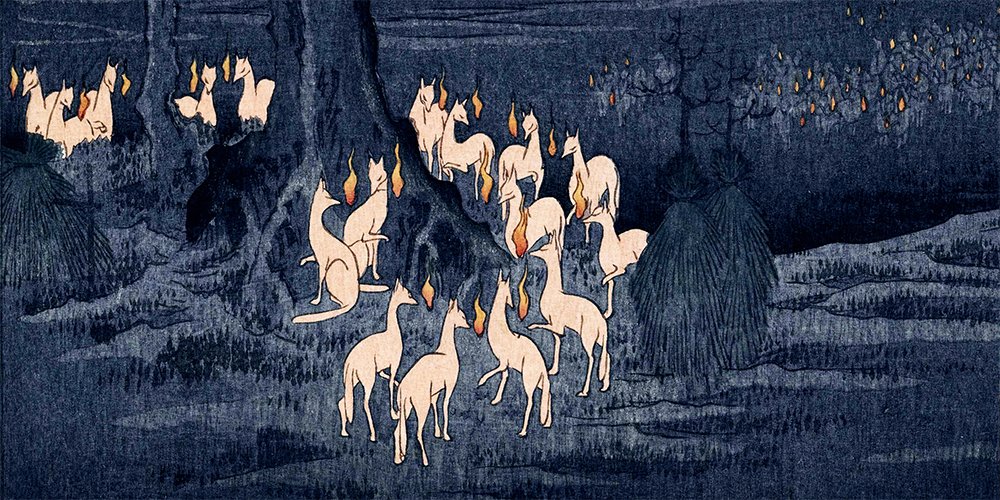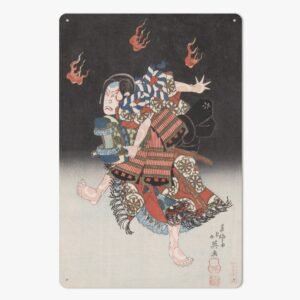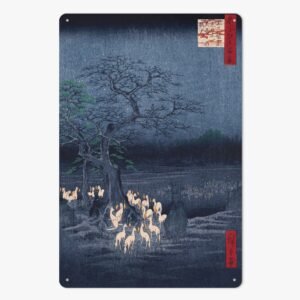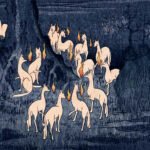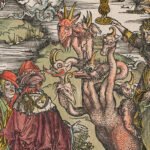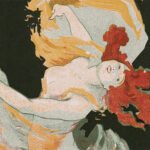Spanning from 1603 to 1868, the Edo period was one of the most artistically vibrant eras in Japanese history. Under the rule of the Tokugawa shogunate, Japan enjoyed more than two centuries of political stability, isolation from the outside world, and flourishing urban culture. This gave rise to a uniquely Japanese aesthetic, most notably embodied in the world-famous ukiyo-e woodblock prints.
From dramatic kabuki actors and elegant courtesans to majestic landscapes and folklore scenes, Edo art captured both the beauty of the everyday and the spiritual heart of Japan.
Ukiyo-e: Pictures of the Floating World
The word ukiyo-e translates to “pictures of the floating world,” referring to the fleeting pleasures of urban life—entertainment, beauty, and nature. These prints were mass-produced using carved woodblocks and vibrant pigments, making them accessible to the growing middle class.
Edo art was not about the elite or classical tradition. Instead, it reflected the world of townspeople: actors, geishas, merchants, and travelers. This democratization of art contributed to a visual language that is still admired and collected worldwide.
Masters of Edo Period Art
Here are some of the most influential artists whose work helped define the Edo period :
-
Katsushika Hokusai (1760–1849) Perhaps the most internationally recognized Japanese artist, Hokusai’s iconic The Great Wave off Kanagawa is part of his series Thirty-Six Views of Mount Fuji. His work blends dynamic composition with deep spiritual symbolism.
-
Utagawa Hiroshige (1797–1858) Known for his poetic and atmospheric landscapes, Hiroshige’s One Hundred Famous Views of Edo and The Fifty-Three Stations of the Tōkaidō shaped how people viewed the geography of Japan—both then and now.
-
Kitagawa Utamaro (c. 1753–1806) Utamaro specialized in bijin-ga, or “pictures of beautiful women,” and brought a refined elegance to portraits of geishas and courtesans. His prints remain some of the most sensual and graceful in Japanese art.
-
Toshusai Sharaku (active 1794–1795) Mysterious and short-lived in his career, Sharaku created intense and expressive portraits of kabuki actors that stand out for their psychological depth and bold lines.
-
Tsukioka Yoshitoshi (1839–1892) Though born during the final decades of the Edo period, Yoshitoshi is more accurately associated with the early Meiji era, when Japan was rapidly modernizing. Despite this, his style and subject matter were deeply rooted in the ukiyo-e traditions of Edo, making him a spiritual successor to earlier masters. His series One Hundred Aspects of the Moon (1885–1892) is a late, nostalgic masterpiece that honors and extends the legacy of Edo printmaking into the modern age.
Enduring Influence and Global Appeal
The influence of Edo art extends far beyond Japan. In the 19th century, ukiyo-e prints were imported to Europe, where they deeply impacted Impressionist and Art Nouveau artists such as Van Gogh, Monet, and Toulouse-Lautrec. Today, their elegant lines, dramatic perspectives, and rich colors continue to inspire designers, illustrators, and collectors worldwide.
Bring the Spirit of Edo into Your Home
Whether you love dramatic landscapes, delicate portraits, or historical legends, Edo period prints offer a window into a world of beauty, simplicity, and emotion. Their timeless elegance and cultural depth make them ideal for interior decor or curated art collections.
Explore our handpicked selection of Edo period prints below and add a piece of Japanese history to your home.

